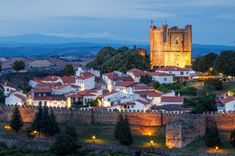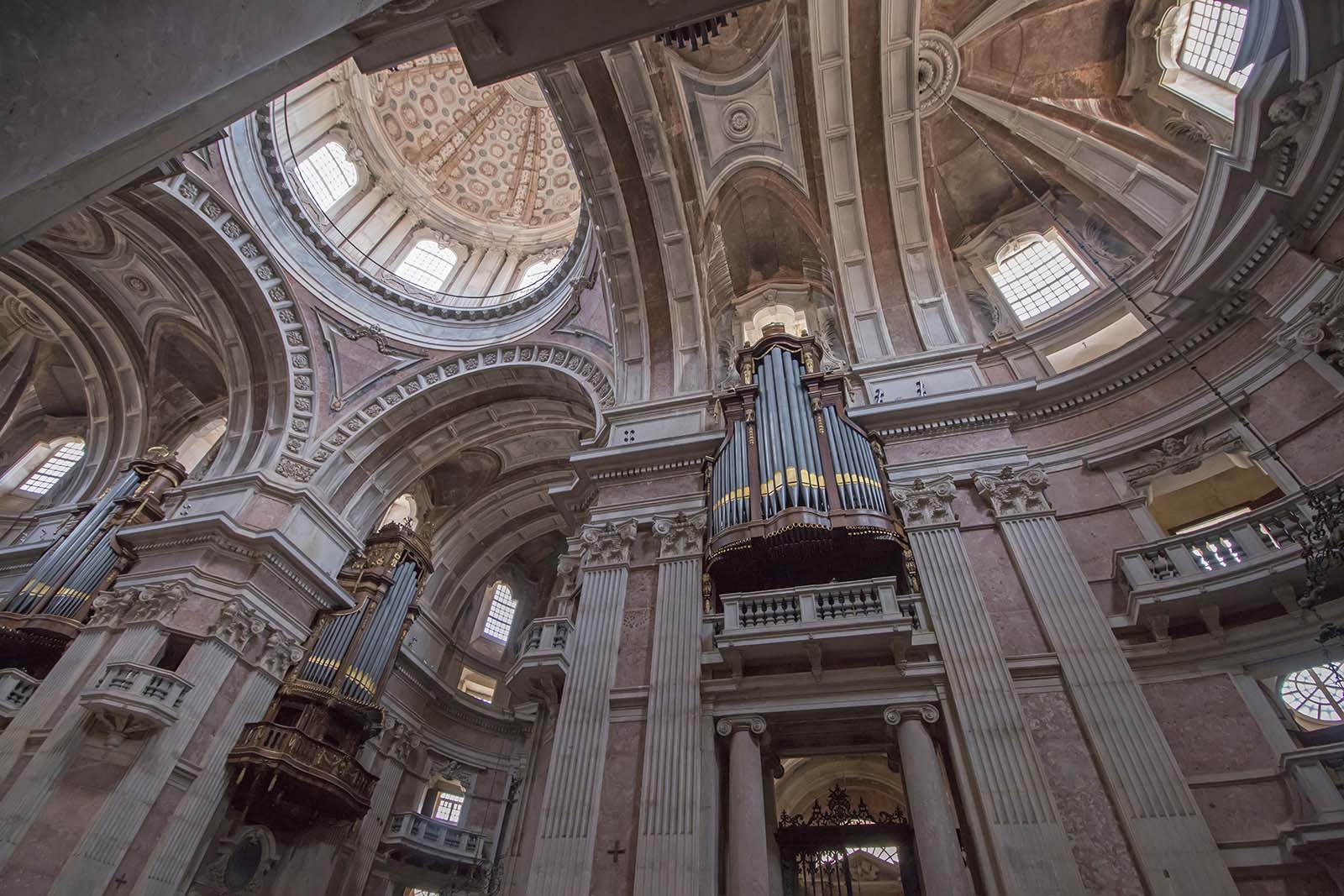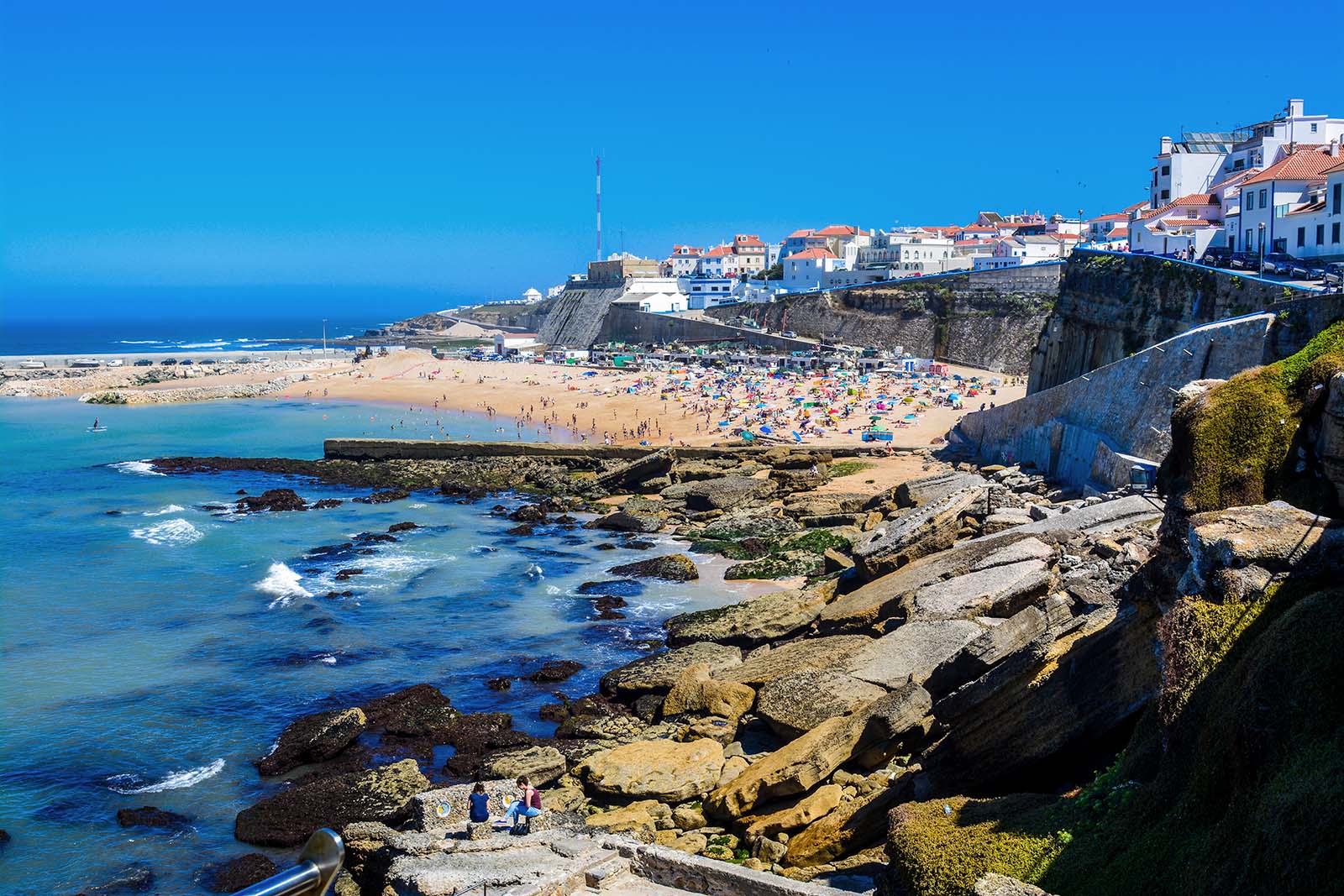Planning your own trip? Prepare for your trip
Use Rough Guides' trusted partners for great rates
Plan and book your private, tailor-made tour with vetted local experts
Mafra is a small town best known for its vast baroque showpiece, the Palácio Nacional de Mafra. Commissioned by Dom João V in the 18th century, it was built on the back of Brazil’s gold wealth and remains one of Portugal’s most imposing royal monuments. The scale is staggering: a palace, monastery, basilica, and one of Europe’s finest libraries all rolled into one.
Only 12km inland from Ericeira and less than an hour from Lisbon, Mafra is easy to pair with a coastal trip or a day that also takes in Sintra. Drivers can add nearby stops, from the Tapada de Mafra, a royal hunting ground turned nature park, to Sobreiro, a traditional craft village. Most visitors come for the palace, but stay a little longer and you’ll see that Mafra’s surroundings add as much to the visit as its monumental stone façade.

Hi, I’m Joel, your Portugal travel expert. Mafra might not be a household name, but its palace is one of the largest buildings in the country and a must-see if you’re anywhere near Lisbon. Dom João V poured Brazil’s gold into building this vast baroque complex in the 18th century, and the result is staggering: basilica domes, endless corridors, and a library that feels lifted from a fantasy novel.
Most people come for a half-day from Lisbon, Sintra, or Ericeira, but Mafra rewards a slower look. Pair the palace with a wander in Tapada de Mafra, the former royal hunting grounds where deer and wild boar still roam, or stop by Sobreiro to see traditional crafts. This Mafra travel guide covers the essentials: how to get here, the best time to visit, and where you might want to stay if you decide not to rush back to the city.
Joel’s tip
Plan your palace visit in the morning. Tour groups usually arrive later, and you’ll have a quieter time in the library and basilica before the crowds build.
Best time to visit
Spring and autumn are the best, with mild weather and fewer crowds. April to June brings wildflowers to the Tapada, while September and October are pleasant for exploring both palace and coast. July and August are busy, especially with visitors from nearby beaches. Winter is quieter, and the mist around the palace gives it a striking, moody atmosphere.
How to get to Mafra
From Lisbon, Mafra is about 40 minutes by car along the A8. There are frequent buses from Lisbon’s Campo Grande terminal that take around an hour. If you’re coming from Ericeira, it’s a quick 15-minute bus or taxi ride inland. Driving makes it easier to combine Mafra with other stops like Sintra or the coastal cliffs north of Ericeira.
Best areas to stay in Mafra
Mafra sits in central-western Portugal, about 40 km northwest of Lisbon and just 12 km inland from the fishing town and surf beaches of Ericeira. The town lies on a gentle plateau, easy to reach by car in under an hour from the capital or by regular bus from Lisbon’s Campo Grande terminal.
Though small, Mafra is often highlighted as one of the best places to visit in Portugal if you’re interested in history and architecture. Its monumental palace dominates the town, but Mafra’s location also makes it an easy stop on a broader Portugal itinerary that includes Lisbon, Sintra, and the Atlantic coast. From here, you can spend the morning exploring the palace, then continue to the beaches of Ericeira, the trails of Tapada de Mafra, or the rolling countryside dotted with villages and vineyards.
















Mafra is a small town dominated by its monumental palace, so most of what you’ll want to see is concentrated within walking distance. The streets are straightforward to navigate, but distances inside the palace complex itself can be long, and the surrounding countryside is best reached with a car. Public transport in the area is limited, so plan accordingly.

Air view of Mafra's barroque palace © NunoGplus/Shutterstock
If you’re asking how much time Mafra deserves, a single half-day will cover the essentials. The palace alone takes two to three hours if you want to see the basilica, the library, and some of the endless corridors without rushing. Add a stroll through the town square and a coffee at a nearby café, and you’ll have a good sense of the place.
But if you can, give Mafra a full day. That allows you to pair the palace with the Tapada de Mafra, a former royal hunting ground turned nature reserve where you can hike, cycle, or join a wildlife tour. Families will also appreciate the space for kids to run free. With extra time, you can stop in the nearby craft village of Sobreiro or continue to the beaches of Ericeira for dinner by the sea.
Mafra itself has only a handful of places to stay, most small guesthouses or rural properties just outside town. Many visitors base themselves in nearby Ericeira, where there’s a wider choice of hotels, surf lodges, and seaside apartments. Here’s how to decide where to stay depending on your trip.

Old village of Mafra, Portugal © Shutterstock
Mafra may look like a small town, but its palace dominates everything: in size, history, and presence. Once you’ve seen the monumental complex, there’s more nearby to fill a rewarding day. Here are the top things to do in Mafra and its surroundings.
The Palácio Nacional de Mafra is reason enough to come. Built in the 18th century by Dom João V, this monumental palace-monastery complex is one of the largest buildings in Portugal. It houses a basilica with twin bell towers, vast cloisters, and a royal library considered one of the finest in Europe. Inside, you’ll walk long marble corridors, step into ornate state rooms, and see hunting trophies that recall its role as a royal retreat.
The library is the star, with thousands of leather-bound volumes and colonies of bats that still protect them from insects. Allow at least two hours to explore properly, more if you linger over details. Arrive early in the day before tours arrive, and bring comfortable shoes; the sheer scale means you’ll be walking a lot.
At the heart of the palace stands the basilica, its twin bell towers dominating the skyline. Built in Italian baroque style, it is lined with colored marble and filled with side chapels that were once showcases of royal patronage. Look up at the dome for the best sense of its scale, then pause to listen if the bells are ringing: the carillons here are among the largest in Europe, with 98 bells in total.
The basilica is free to enter, making it an easy stop even if you don’t tour the rest of the palace. Late afternoon light filters beautifully through the windows, catching the marble in soft gold.
The palace library deserves its own mention. Stretching nearly 90 meters, with high arched ceilings and marble floors, it houses around 36,000 volumes, including rare first editions, illuminated manuscripts, and treatises on everything from theology to natural sciences. The room itself is a masterpiece, with carved wooden shelves and long central tables once used by scholars and monks.
What makes it unique is the colony of bats that live in the building. They come out at night to eat insects, protecting the books without the need for chemicals. Visitors rarely see the bats, but the idea that such creatures are guardians of knowledge adds a touch of magic. Entry is included with the palace ticket, but it’s worth timing your visit to enjoy the library with fewer people around.
Created in the 18th century as a royal hunting ground, the Tapada de Mafra is now a vast walled park that protects forests, meadows, and wildlife. Covering more than 800 hectares, it feels a world away from the town center, yet it’s only a few minutes’ drive from the palace. Trails wind through cork oak and pine woods where you can spot deer, wild boar, and birds of prey.
The park offers marked walking and cycling routes of different lengths, as well as guided tours for families. In spring and autumn, the colors and light are especially beautiful, while in summer the shade provides welcome relief. Bring water and good shoes, as the trails can be long.
Just outside Mafra lies the craft village of Sobreiro, where potter José Franco spent decades creating a miniature version of a Portuguese rural town. Known as Aldeia Típica José Franco, it includes scale models of mills, chapels, and houses, many with moving parts powered by water. Children can wander through workshops where bakers and blacksmiths are recreated in clay, while adults will appreciate the nostalgic glimpse of village life.
Alongside the models, there are pottery shops where you can buy rustic ceramics, and a traditional bakery serving pão com chouriço hot from the oven. Entry is free, though donations are welcome. It’s a quirky but endearing stop, best combined with a visit to Mafra or Ericeira.
Though the palace dominates, Mafra itself has corners worth exploring. Around the central square, you’ll find cafés, bakeries, and small shops tucked under arcades. Streets spill out from the palace in a grid, with whitewashed houses and tiled façades giving the town a lived-in feel. Stop at a pastelaria for a coffee and a fradinho, Mafra’s signature almond pastry, or browse shops selling regional produce like honey and wine.
The pace is slow, and part of the charm is simply sitting on a terrace, looking up at the basilica towers. If you’re here on a weekday morning, check the local market for fresh fruit, vegetables, and cheese.
Food in Mafra is hearty and rooted in the surrounding countryside. One of the best experiences is sitting down in a small tasca, where menus are short and seasonal. Look out for dishes like cabrito assado (roast kid goat), porco preto (Iberian black pork), and simple grilled fish delivered daily from the coast at Ericeira. Portions are generous, and meals often begin with bread, olives, and local cheese.
Pair your food with a glass of vinho tinto from the Lisboa region, which produces soft reds and crisp whites just north of here. For dessert, try the fradinhos, little almond cakes said to have been invented by Mafra monks. Many tascas are family-run, with décor that hasn’t changed in decades.

Inside view details of the National Palace of Mafra landmark, Portugal © Shutterstock
Just 12 km from Mafra, Ericeira is one of Portugal’s prettiest coastal towns and a world surfing reserve. Its old center is filled with cobbled streets, whitewashed houses trimmed in blue, and seafood restaurants looking out to the Atlantic. The beaches here are more than just a backdrop for surfers: Ribeira d’Ilhas and Foz do Lizandro often appear on lists of the best beaches in Portugal, combining dramatic cliffs with clean surf and golden sand.
Even if you don’t surf, Ericeira is worth the trip for a stroll along the cliffs or a lazy afternoon by the sea. Many visitors pair a palace morning in Mafra with seafood in Ericeira, where sardines, shellfish stews, and fresh fish are the stars. The town is at its liveliest in summer, but even in winter the Atlantic feels wild and dramatic. Regular buses connect Mafra and Ericeira, or you can drive in 15 minutes.
A short drive from Mafra brings you to the Convent of Santo António do Varatojo, founded in the 15th century by King Afonso V. It remains an active Franciscan convent, with a church and cloister that preserve centuries of religious history. The highlight is the garden, where the friars still grow fruit, vegetables, and medicinal plants.
Visits are guided by members of the order, who share stories of monastic life and explain the symbolism behind the architecture. It’s quieter and less imposing than the palace, but that makes it all the more atmospheric. The convent also has a small museum of sacred art. Check opening times before you go, as access is limited.
If you time your visit right, Mafra comes alive with festivals. The biggest is the annual pilgrimage of Nossa Senhora da Nazaré in September, which brings music, processions, and food stalls to the streets. Throughout the year, smaller events showcase traditional crafts, folk dancing, and local produce, often held in the square outside the palace.
One of the most atmospheric experiences is hearing the full set of palace carillons played during special concerts, when all 98 bells ring out in complex harmonies. These events are rare but unforgettable, shaking the town with sound. Check the palace schedule or the local tourism office for dates.
Mafra has a mild Atlantic climate, shaped by its proximity to the coast at Ericeira. Summers are warm but tempered by ocean breezes, winters are cooler with occasional rain, and day-to-night temperatures are less extreme than in inland towns like Monsanto or Viseu. Average temperatures range from 48°F (9°C) in January to 79°F (26°C) in August. Heatwaves can push it into the 90s, though evenings often cool pleasantly thanks to the coastal winds. For up-to-date conditions, check IPMA (Portuguese Institute for Sea and Atmosphere).

Ericeira Praia dos Pescadores beach © Shutterstock
Mafra’s dining scene blends hearty inland cooking with the freshness of the Atlantic, thanks to its proximity to Ericeira. You’ll find traditional tascas serving roasts and stews alongside restaurants specializing in seafood. Most places are informal and family-run, with menus that lean heavily on local ingredients. Expect big portions, affordable prices, and a taste of the countryside just a short hop from the coast.
Discover Mafra through tailored experiences, crafted and led by our local experts who know the region best.
Discover Portugal's most captivating stories
Use Rough Guides' trusted partners for great rates
written by
Olga Sitnitsa
Online editor at Rough Guides, specialising in travel content. Passionate about creating compelling stories and inspiring others to explore the world.